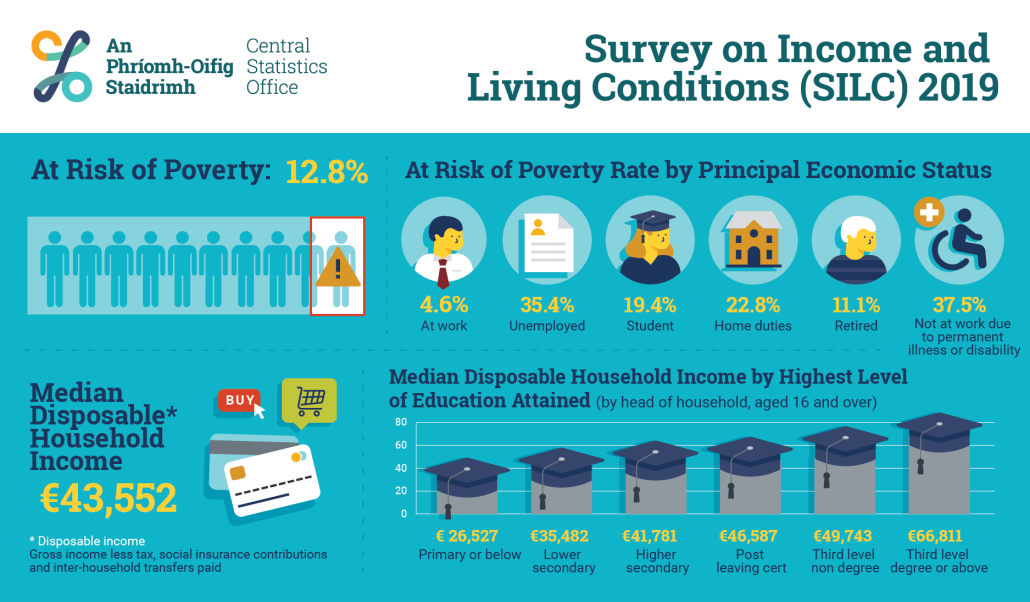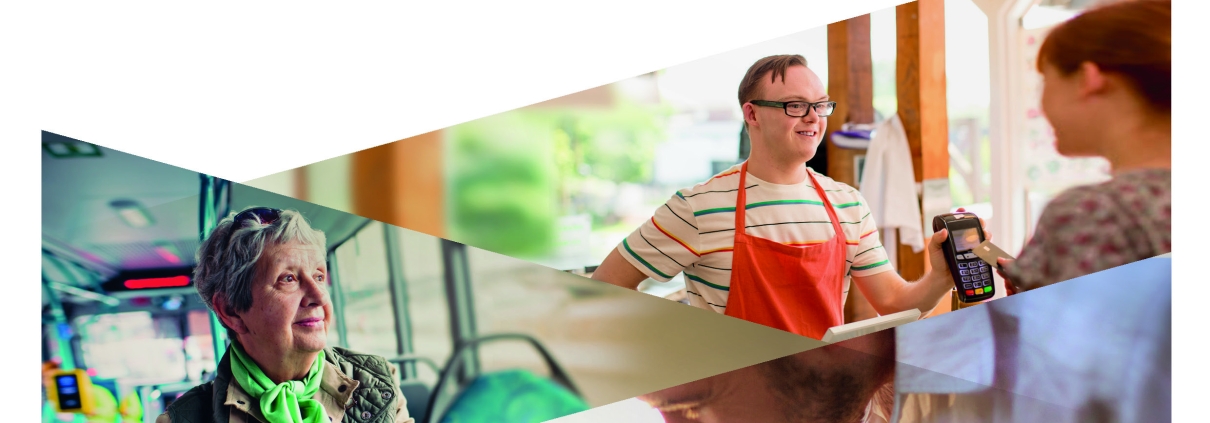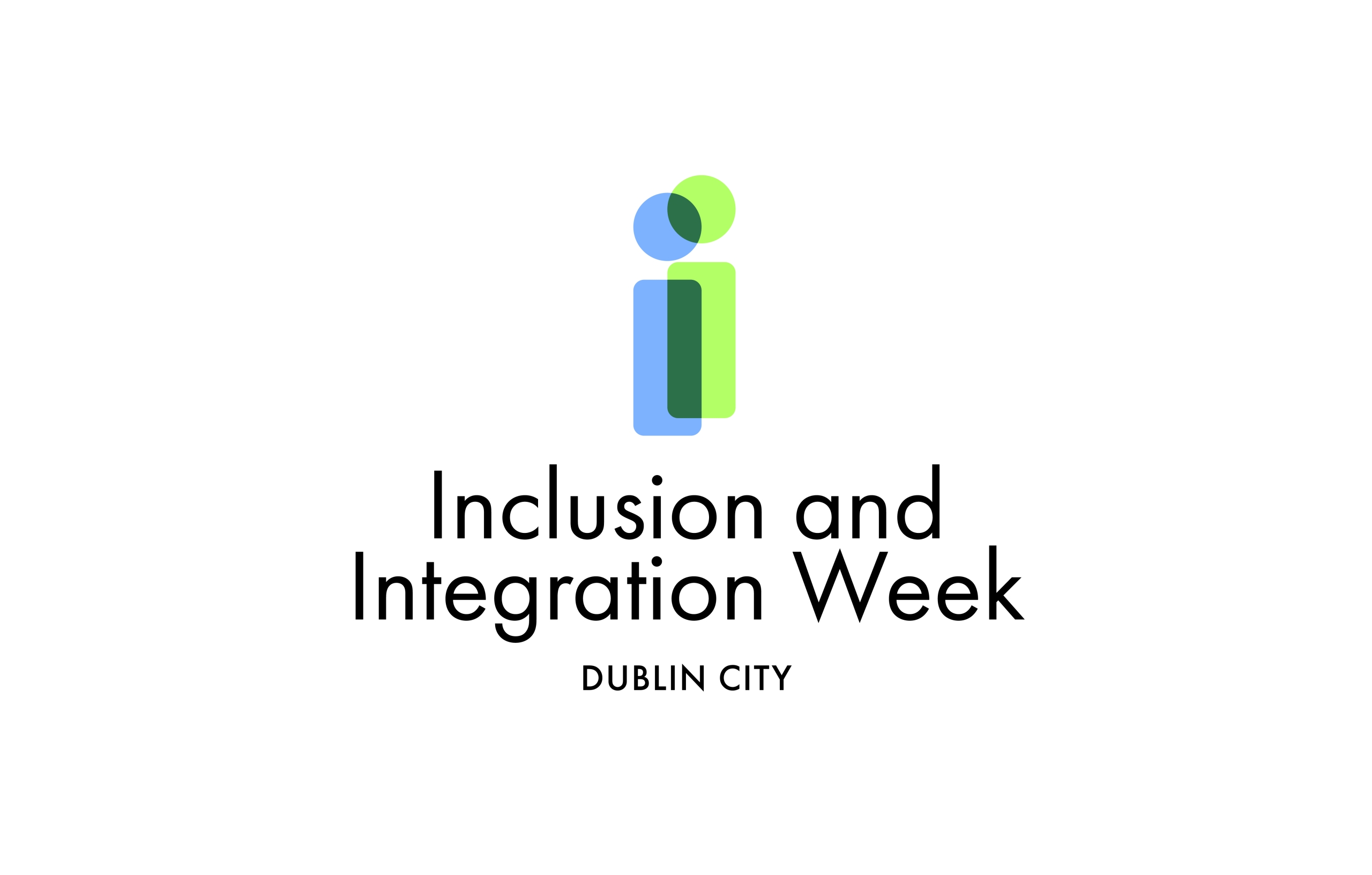Poverty and Social Exclusion – Ireland
The Roadmap for Social Inclusion 2020-2025 contains Ireland’s national targets on poverty and social inclusion. It builds on the work of previous National Anti-Poverty Strategies. In the Roadmap for Social Inclusion the government reaffirms its commitment to achieve the long-held, but as yet unrealised, ambition of reducing consistent poverty to 2% or less by 2025. Government also reaffirms its commitment to the national target of reducing the number of children in consistent poverty by 70,000 from its 2011 level in the Roadmap for Social Inclusion.
The national poverty target is to reduce the national consistent poverty rate to 2 per cent or less of the population and to make Ireland one of the most socially inclusive States in the EU by 2025.
There is also a specific target for child poverty in the Roadmap for Social Inclusion.
Government reaffirms its commitment to the national target of reducing the number of children in consistent poverty by 70,000 from its 2011 level in the strategy. There is also a new target, aiming to improve Ireland’s ranking for child poverty (children under 18 years of age at risk of poverty or social exclusion) from 20th in the EU to 5th or lower (equivalent to reducing the percentage of children under 18 years of age at risk of poverty and social exclusion from 23.9% in 2018 to 16%.).
European Union Poverty Target
European Pillar of Social Rights
There is also a poverty target at a European Union level. The target, as set out in the European Pillar of Social Rights Action Plan is that ‘the number of people at risk of poverty or social exclusion should be reduced by at least 15 million by 2030, and out of them, at least 5 million should be children.’ EU member states are asked to define their own national targets, as a contribution to this common endeavour. The targets set out in Ireland’s Roadmap for Social Inclusion will be Ireland’s contribution to this target.
How is poverty measured?
In trying to measure the extent of poverty, the most common approach has been to identify a poverty line (or lines) based on people’s disposable income (earned income after taxes and including all benefits). The European Commission and the United Nations (UN), among others, use a poverty line located at 60 per cent of median income. The median disposable income is the income of the middle person in society. This poverty line is the one adopted in the SILC survey.

Irish data on poverty looks at those living below this 60% line and is published each year by the Central Statistics Office (CSO) using results from a comprehensive national survey called SILC (Survey on Income and Living Conditions).
The Survey on Income and Living Conditions contains data on three different measurements of poverty: at-risk-of-poverty, experiencing enforced deprivation and consistent poverty. The most up-to-date data available on poverty in Ireland comes from the 2019 SILC survey, published in October 2020.
At risk of poverty
An individual is defined as being at risk of poverty if their nominal equivalised disposable income is under the at risk of poverty threshold, i.e. 60% of the median nominal equivalised disposable income.
The ‘at-risk-of-poverty’ rate in 2019 was 12.8%.
Enforced Deprivation
Households that are excluded and marginalised from consuming goods and services which are considered the norm for other people in society, due to an inability to afford them, are considered to be deprived. The identification of the marginalised or deprived is currently achieved on the basis of a set of eleven basic deprivation indicators:
- Two pairs of strong shoes
- A warm waterproof overcoat
- Buy new (not second-hand) clothes
- Eat meal with meat, chicken, fish (or vegetarian equivalent) every second day
- Have a roast joint or its equivalent once a week
- Had to go without heating during the last year through lack of money
- Keep the home adequately warm
- Buy presents for family or friends at least once a year
- Replace any worn out furniture
- Have family or friends for a drink or meal once a month
- Have a morning, afternoon or evening out in the last fortnight for entertainment
Individuals who experience two or more of the eleven listed items are considered to be experiencing enforced deprivation. This is the basis for calculating the deprivation rate.
The deprivation rate in 2019 was 17.8%.
Consistent poverty
The consistent poverty measure is defined as people who are both at risk of poverty and experiencing enforced deprivation.
The consistent poverty rate in 2019 was 5.5%.
 At risk of poverty or social exclusion (AROPE)
At risk of poverty or social exclusion (AROPE)
At risk of poverty or social exclusion (AROPE) corresponds to the sum of persons who are either at risk of poverty, or severely materially and socially deprived or living in a household with a very low work intensity. People are included only once even if they are in more than one of the situations mentioned above. The AROPE rate is the share of the total population which is at risk of poverty or social exclusion. It is the main indicator to monitor the EU 2030 target on poverty and social exclusion. This data is published by Eurostat for all EU member states (https://ec.europa.eu/eurostat/web/income-and-living-conditions/overview).
The at risk of poverty or social exclusion rate for the EU in 2019 was 21.4%.
What is social inclusion?
The Roadmap for Social Inclusion 2020-2025 defines the achievement of social inclusion as:
“Social Inclusion is achieved when people have access to sufficient income, resources and services to enable them to play an active part in their communities and participate in activities that are considered the norm for people in society generally.”
What is poverty?
The National Anti-Poverty Strategy (NAPS) published by Government in 1997 adopted the following definition of poverty:
“People are living in poverty if their income and resources (material, cultural and social) are so inadequate as to preclude them from having a standard of living that is regarded as acceptable by Irish society generally. As a result of inadequate income and resources people may be excluded and marginalised from participating in activities that are considered the norm for other people in society.”
This definition was reiterated in the subsequent National Action Plan for Social Inclusion 2007-2016 (NAPinclusion) and restated in the Roadmap for Social Inclusion 2020-2025.



